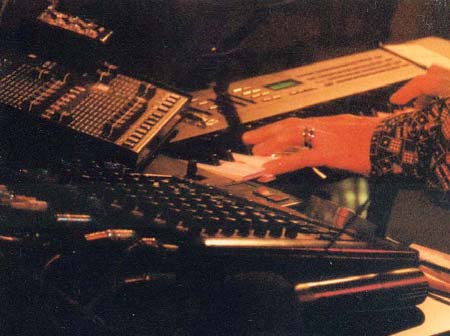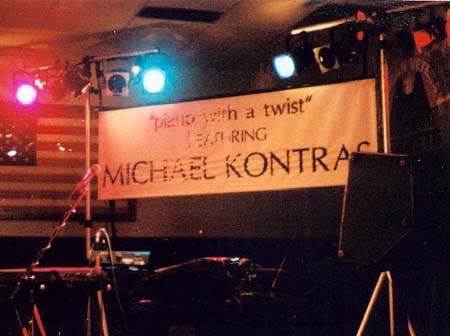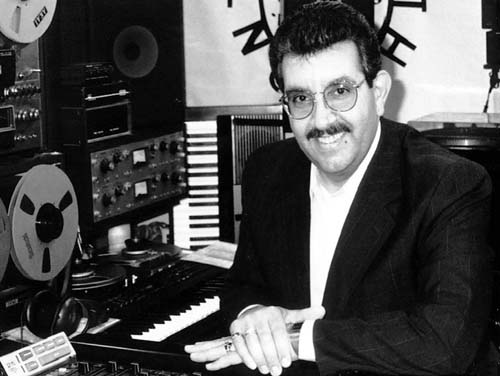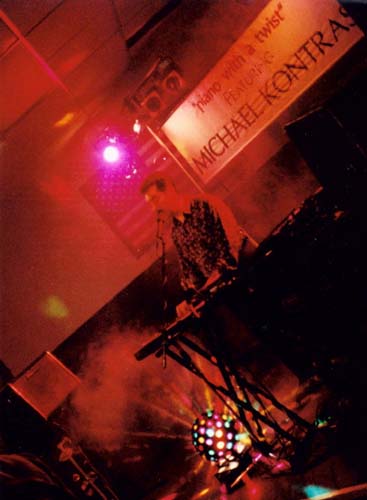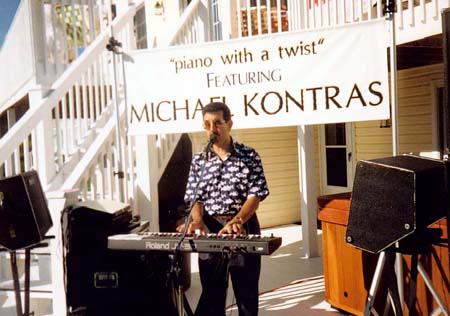
|
In December of 1995 and January of 1996 I came up with "The Plan". I needed two things to happen, but not necessarily simultaneously. First, I needed to become self-employed as a musician with enough income to cover my bills. Second, I needed to get myself beyond "paying the bills" using my composing and recording talents. I have learned a lot over the last three decades and it was time I put that knowledge to use. Fortunately, I had all of the equipment I needed to execute part one of "The Plan". It was not necessary to immediately acquire the few items I would need for part two. I did not set a hard-fast time table but I did make a promise to myself that I would not stop doing part one until part two could really take over. During the course of the next few years, I did get sidetracked a little but I never lost sight of my goal. The first and toughest decision of "The Plan" was going solo. After 30 years of playing in groups, trios and duos, the thought of doing a solo act was a little unsettling but this was the only way I could earn enough money to "pay the rent" and still have enough time to work on the second part of "The Plan". The next decision I made was not to be a pianist in a restaurant or hotel providing music while people ate, talked and basically ignored you. I did not get into the entertainment business to be a human background music service. The third decision was a result of the first two decisions - to be a one man show where I sang and played a keyboard doing a variety of music that appealed to fun-loving audiences that knew how to have a good time. I am not a traditional pianist and although I studied the classics when I took piano lessons, my musical influences are in rock 'n roll. Therefore, I wanted this act to have energy in its sound, with its lights and in the music selection. I needed to create a one man show that made people want to pay attention, with the look and sound of a good band. I then had to convince buyers to try something unique in their rooms. This is never an easy task. Many rooms where a solo show might work were using Karaoke shows with one person working the crowd. They charged far less than I was planning to charge and because of its' popularity, even bad Karaoke shows would get the bookings. I needed to focus on rooms that had the budget for bands and were willing to try a one man show. Then I would have the edge because I was charging a little less than most of their acts but giving them all the quality (and then some) of a good band. |
|
In addition, not all of the songs could be used in all of the venues, so I needed to have about 20 extra tunes that could be rotated in and out of a night's performance to accommodate different audiences. This will give you an idea of how many hours were spent preparing the music for the show. The technical end of my show could not be cumbersome. It had to flow smoothly from one song to another without long waits between songs, much like a well rehearsed band. I therefore decided to take the rhythm tracks that I had recorded and have them "burned" to CD-Rs. At the time, CD-Rs were just coming into the mainstream and although I did not own a "burner", there was a studio nearby that made them for me for a reasonable price. On stage, I would use a professional CD changer that moved from one track (song) to another, even on different discs, in less than 10 seconds. That may seem quick to a layman, but on stage, 10 seconds is a long time. Part of what was going to make my show successful was no lag time between songs. I planned on preparing each set in advance so that performances would go smoothly. If someone requests a song, I simply add it to my "playlist" which takes less than five seconds and then I perform it some time during that set, without affecting the flow of the show. |
|
While I was putting the live show together, I earned money doing DJ work in different clubs. This forced me to expand my library considerably and within a few months, it was well-stocked. With my DJ library and equipment up to par, I decided to book my live show prematurely and combine it with my DJ work just to get things going. I would "spin" two songs and then perform one. This was an interesting twist to just being a DJ and it allowed me extra time to prepare my live show and still pay the rent. I would eventually drop the DJ portion of the performance knowing that I could not charge live show fees being a DJ. Being a DJ was not part of the plan. |
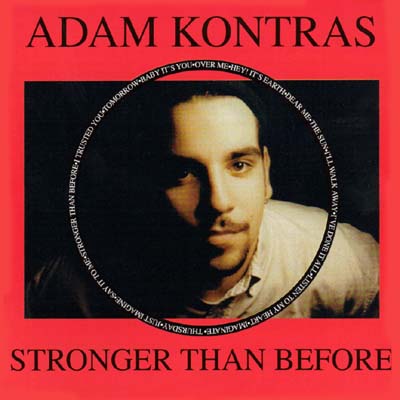 |
In addition to working on my live show, my son Adam & I co-produced his first CD. He wrote all the material and performed all the vocal tracks. I recorded the instrumental tracks. Adam's position as a weekend talk show host of the popular "The Late Show with Adam Kontras" on Columbus, Ohio's WTVN helped to make the release of the CD, "Stronger Than Before" a success. |
|
My first New Years' Eve party was in a small venue in Columbus, Ohio. I was fortunate enough to get booked in a room where I knew virtually everyone. This made the night very special. |
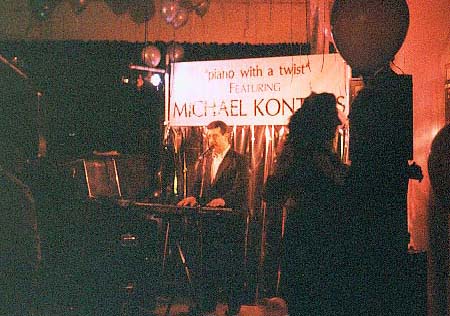 |
|
1997 was the first full year for "piano with a twist" and it was quite a learning year for me. I quickly find out that my best rooms are veterans' and fraternal organizations. My show seems to be a refreshing change in a lot of these rooms that are heavily booked with primarily country music bands. The audiences are responsive and show their appreciation for good music that is presented in a professional manner. In most public clubs, the focus has turned away from live entertainment and turned to sports with large TV screens filling the rooms. I do an occasional public room but I am very picky about those venues. |
